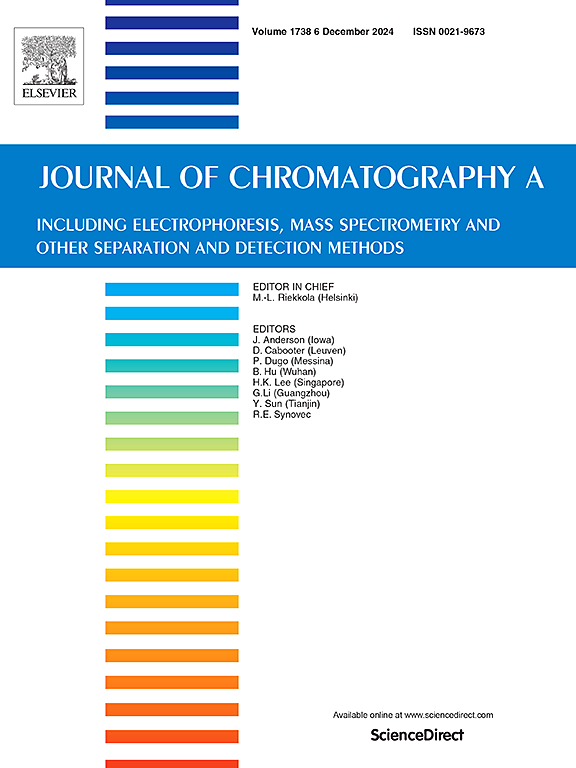Machine learning for predicting retention times of chiral analytes chromatographically separated by CMPA technique
IF 3.8
2区 化学
Q1 BIOCHEMICAL RESEARCH METHODS
引用次数: 0
Abstract
Chiral mobile phase additive (CMPA) technique is an attractive method for chromatographic enantioseparation of chiral analytes. However, establishing chromatographic separation and analysis methods for given chiral analytes often requires extensive trial-and-error experiments, leading to time-consuming processes with high experimental costs. To address this challenge, machine learning (ML) was employed for the prediction of retention times of R and S-analytes to facilitate chromatographic enantioseparation. In this study, the enantiomeric retention times of chiral analytes enantioseparated by HPLC using cyclodextrin derivatives as CMPA were recorded, and the molecular descriptors of both the chiral analytes and the CMPA were calculated. Subsequently, several algorithms were employed for model development, with the coefficient of determination (R2) serving as the metric to assess the precision of these models. The findings indicate that the CatBoost model works well in predicting retention times and separability of chiral analytes. This study provides a rapid and efficient method to facilitate the development of CMPA technique.
求助全文
约1分钟内获得全文
求助全文
来源期刊

Journal of Chromatography A
化学-分析化学
CiteScore
7.90
自引率
14.60%
发文量
742
审稿时长
45 days
期刊介绍:
The Journal of Chromatography A provides a forum for the publication of original research and critical reviews on all aspects of fundamental and applied separation science. The scope of the journal includes chromatography and related techniques, electromigration techniques (e.g. electrophoresis, electrochromatography), hyphenated and other multi-dimensional techniques, sample preparation, and detection methods such as mass spectrometry. Contributions consist mainly of research papers dealing with the theory of separation methods, instrumental developments and analytical and preparative applications of general interest.
 求助内容:
求助内容: 应助结果提醒方式:
应助结果提醒方式:


